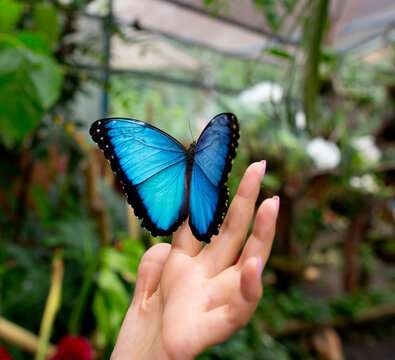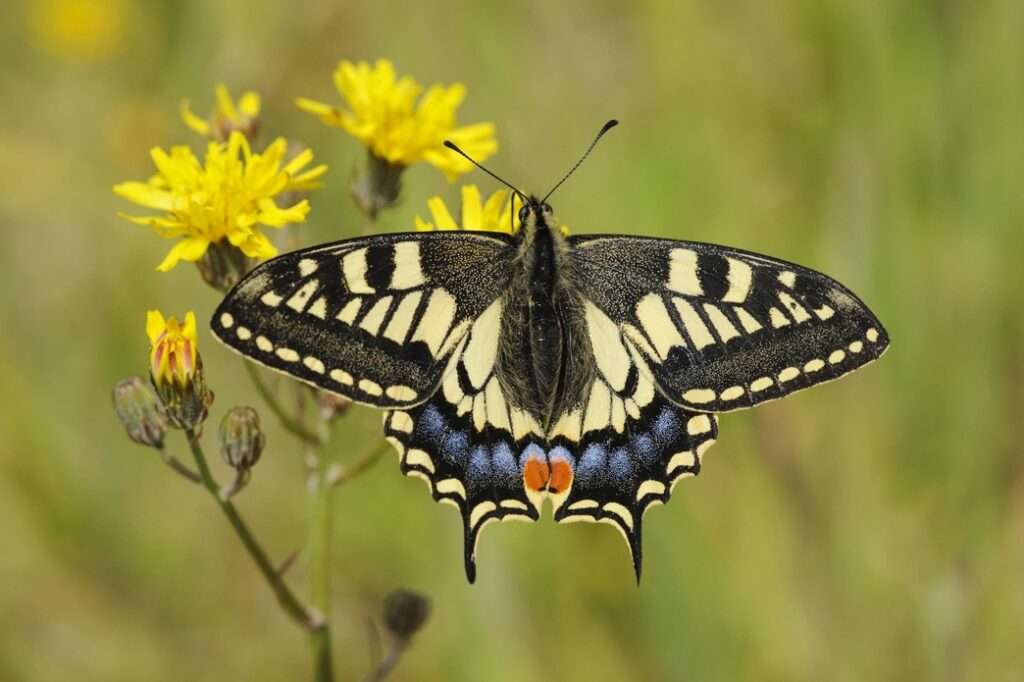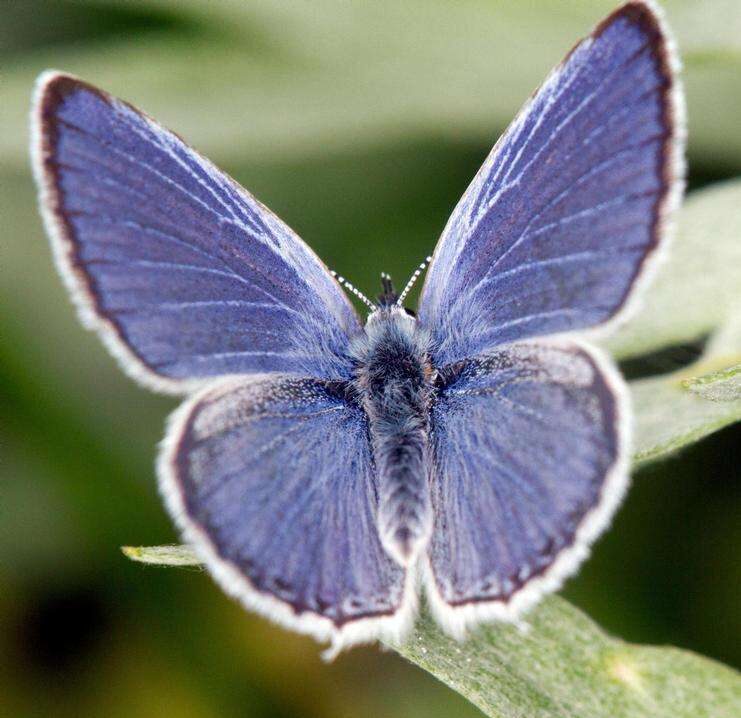
Amazing Facts about Morpho
- The wings of blue morpho butterflies have evolved to be blue in hue with some greenish tones that are evident when light reflects on them. However, some variants have practically all-white plumage, while others have tawny orange to dark brown colorings.
- Its wingspan is 7.5 cm (3 inches).
- The predominant color is always blue.
- The zigzag design of the ridges makes it more resemble a Christmas tree. Thus, when the light is cast upon the wings, the direction of the light is reduced by the shape of a Christmas tree. Additionally, the pattern eliminates needless interference from other wavelengths.
- During flight, the butterfly’s bright blue to drab brown coloration reflects.
Appearance
Any of the numerous, enormous, tropical American butterfly species known as morpho (family Morphidae) have brilliant, iridescent wings that typically have a distinct blue region. Morphos are among the biggest and most iridescent Central and South American butterflies, with wingspans that can reach 20 cm (8 inches). Their range encompasses forests from sea level to 1,400 meters, and it stretches from Mexico through Central America through Venezuela and Trinidad as well as Colombia, Ecuador, and Peru (4,600 feet). Along streams, trails, and roads, morphs glide with ease. For the majority of a population, their flyways appear to act like roadways.

Feeding Habits
Frugivores, or fruit eaters, adult Morpho peleides butterflies frequently consume rotting fruits. They don’t go to flowers for nectar like the majority of butterflies do. They’ve been seen consuming sap from Samanea trees.
Young morpho caterpillars consume plant leaves, much as all other caterpillars. According to the Rainforest Alliance website, morphos are no longer able to chew leaves as adults. Their lengthy mouthpieces, or proboscis, which they use like drinking straws to savor their food, are their main method of eating.
Predators
According to the Rainforest Alliance, morpho butterflies have few natural predators, but deforestation poses a threat to their ecosystems. Because the adults of the butterflies are poisonous and acquired this defense from their plant-based diet as caterpillars, the majority of predators stay away from them. Because of their innate defenses, which can deceive a predator’s vision, morphs are challenging for predators to capture. One of the few species of birds that may still feast on morpho butterflies is the flycatcher.
Habitat
Tropical woods in Latin America, from Mexico to Colombia, are home to blue morphos. The majority of the time, adults rest with their wings folded on the forest floor and among the lower shrubs and trees of the understory. The blue morpho, on the other hand, will fly through every layer of the forest when searching for mates. In clearings and by streams, where their brilliant blue wings are most noticeable, humans are most likely to encounter morphos. Even enormous groups of blue morphos were seen by pilots flying above jungles, warming themselves in the sun above the treetops. Since the blue morpho only has a 115-day lifespan, the majority of its time is spent eating and reproducing.
Table





